
 Copyright 2020 by Rockridge Press, Emeryville, California No part of this publication may be reproduced, stored in a retrieval system, or transmitted in any form or by any means, electronic, mechanical, photocopying, recording, scanning, or otherwise, except as permitted under Sections 107 or 108 of the 1976 United States Copyright Act, without the prior written permission of the Publisher. Requests to the Publisher for permission should be addressed to the Permissions Department, Rockridge Press, 6005 Shellmound Street, Suite 175, Emeryville, CA, 94608. Limit of Liability/Disclaimer of Warranty: The Publisher and the author make no representations or warranties with respect to the accuracy or completeness of the contents of this work and specifically disclaim all warranties, including without limitation warranties of fitness for a particular purpose. No warranty may be created or extended by sales or promotional materials. The advice and strategies contained herein may not be suitable for every situation. This work is sold with the understanding that the Publisher is not engaged in rendering medical, legal, or other professional advice or services.
Copyright 2020 by Rockridge Press, Emeryville, California No part of this publication may be reproduced, stored in a retrieval system, or transmitted in any form or by any means, electronic, mechanical, photocopying, recording, scanning, or otherwise, except as permitted under Sections 107 or 108 of the 1976 United States Copyright Act, without the prior written permission of the Publisher. Requests to the Publisher for permission should be addressed to the Permissions Department, Rockridge Press, 6005 Shellmound Street, Suite 175, Emeryville, CA, 94608. Limit of Liability/Disclaimer of Warranty: The Publisher and the author make no representations or warranties with respect to the accuracy or completeness of the contents of this work and specifically disclaim all warranties, including without limitation warranties of fitness for a particular purpose. No warranty may be created or extended by sales or promotional materials. The advice and strategies contained herein may not be suitable for every situation. This work is sold with the understanding that the Publisher is not engaged in rendering medical, legal, or other professional advice or services.
If professional assistance is required, the services of a competent professional person should be sought. Neither the Publisher nor the author shall be liable for damages arising herefrom. The fact that an individual, organization, or website is referred to in this work as a citation and/or potential source of further information does not mean that the author or the Publisher endorses the information the individual, organization, or website may provide or recommendations they/it may make. Further, readers should be aware that websites listed in this work may have changed or disappeared between when this work was written and when it is read. For general information on our other products and services or to obtain technical support, please contact our Customer Care Department within the United States at (866) 744-2665, or outside the United States at (510) 253-0500. Rockridge Press publishes its books in a variety of electronic and print formats.
Some content that appears in print may not be available in electronic books, and vice versa. TRADEMARKS: Rockridge Press and the Rockridge Press logo are trademarks or registered trademarks of Callisto Media Inc. and/or its affiliates, in the United States and other countries, and may not be used without written permission. All other trademarks are the property of their respective owners. Rockridge Press is not associated with any product or vendor mentioned in this book. of Andy De Santis courtesy of Natalie CD Photography. of Andy De Santis courtesy of Natalie CD Photography.
ISBN: Print 978-1-64611-597-6 eBook 978-1-64611-598-3 R0 To Mom and Dad, this book might be my third, but I know youve believed in me since the days when writing even one may have seemed well beyond my reach. Thank you for everything! 
 CONTENTS
CONTENTS  IF YOUVE PURCHASED THIS BOOK, Im guessing that its probably because you or someone you care about has been diagnosed with elevated LDL, or bad cholesterol, a condition known as hypercholesterolemia. Its also pretty likely that youre worried about what this could mean for your health. But dont fret, thats where this book can help. The first thing I want you to know is that you are not alone. High cholesterol happens, and it actually happens quite often.
IF YOUVE PURCHASED THIS BOOK, Im guessing that its probably because you or someone you care about has been diagnosed with elevated LDL, or bad cholesterol, a condition known as hypercholesterolemia. Its also pretty likely that youre worried about what this could mean for your health. But dont fret, thats where this book can help. The first thing I want you to know is that you are not alone. High cholesterol happens, and it actually happens quite often.
Among the top five prescribed medications in America, two are cholesterol-lowering. Now, you may not find that particularly comforting, but I hope it helps you appreciate that you arent the only one out there going through this. The second and much more comforting thing you should be aware of? We can fix this together. As a dietitian in general private practice, I regularly help clients tackle high cholesterol and, in tandem with the other members of their healthcare team, have had great success in bringing their LDL cholesterol down to much safer levels. The fact that having high cholesterol is such a common occurrence in North America is, on the surface, not the best news. But with notoriety comes attention, which means that the issue is well studied and that the dietary steps required to lower cholesterol levels are quite well understood.
The information and recipes in this book are specifically designed to offer you both relief and empowerment. Together, they put the ability to control your cholesterol levels in your hands. In addition, the 100 easy and delicious recipes included in this book will allow you to put that knowledge into action. You probably arent alone on this journey, and the recipes within have been specifically crafted to accommodate cooking for two. They take the hassle out of recalculating measurements and serving sizes or dealing with leftovers. Even if you are a solo cook, they are wonderfully convenient for a single meal with a serving to spare.
Youve made a great choice in purchasing this book, and Im confident it will play a big role in your journey toward lower cholesterol and a healthier diet. Lets get started!  YOU MAY BE STARTING THIS CHAPTER WIDE-EYED and worried, but my promise is that you will finish it with a full understanding of the dietary and lifestyle changes required to lower your cholesterol. You can also expect a full run-through of all things cholesterol, including what it is, how having high levels of the wrong type of cholesterol puts your health at risk, and the simple steps you can take to move toward better health. The Basics of Cholesterol Cholesterol is a naturally occurring fatty molecule that is produced organically by the human body. It plays a fundamental role in the structure of human cells and is a building block for many important biochemical compounds, including hormones. It is also required for vitamin D production and the synthesis of bile acid, which is an important digestive aid in your gastrointestinal tract.
YOU MAY BE STARTING THIS CHAPTER WIDE-EYED and worried, but my promise is that you will finish it with a full understanding of the dietary and lifestyle changes required to lower your cholesterol. You can also expect a full run-through of all things cholesterol, including what it is, how having high levels of the wrong type of cholesterol puts your health at risk, and the simple steps you can take to move toward better health. The Basics of Cholesterol Cholesterol is a naturally occurring fatty molecule that is produced organically by the human body. It plays a fundamental role in the structure of human cells and is a building block for many important biochemical compounds, including hormones. It is also required for vitamin D production and the synthesis of bile acid, which is an important digestive aid in your gastrointestinal tract.
While cholesterol plays an essential role in our bodies and is naturally present in the bloodstream, having too much of the wrong type floating around can ultimately do more harm than good. Types of Cholesterol There are two primary forms of cholesterol found in the body: HDL and LDL, which stand for high-density lipoprotein (HDL) and low-density lipoprotein (LDL). These lipoproteins are molecules that are responsible for carrying cholesterol throughout the body via the bloodstream, but there are critical differences between them. HDLs primary responsibility is to transport excess cholesterol to the liver, where it is eliminated. It plays an important role in regulating your blood cholesterol levels, which is why it is often referred to as the good form of cholesterol. LDLs primary responsibility is to carry the majority of the cholesterol in your blood to your bodily tissues, where it is used for a variety of biological purposes.
A healthy body regulates LDL levels through the liver. However, genetic, lifestyle, and dietary factors may mean that you have more LDL in your blood than your body can get rid of. When LDL levels in the blood are high, the risk of inflammation, artery damage, and chronic disease increases. Thats exactly why LDL is commonly referred to as bad cholesterol.
Next page
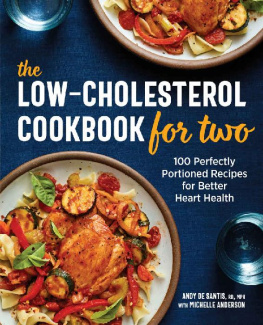


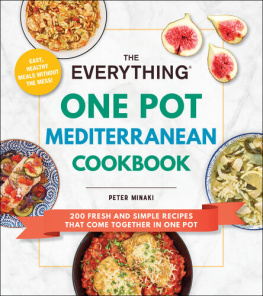
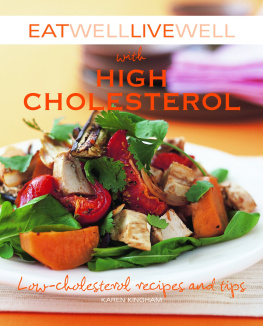
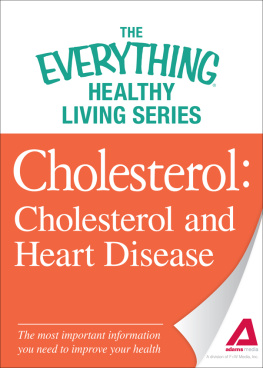
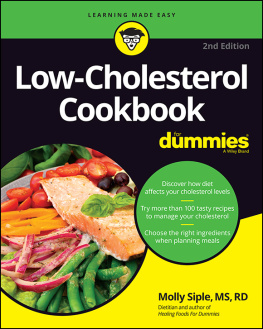
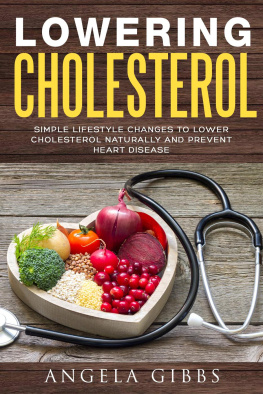
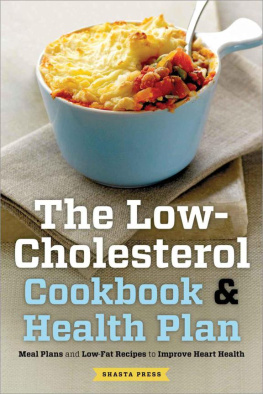
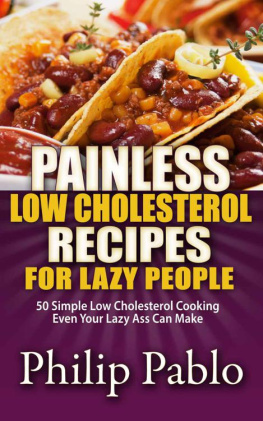
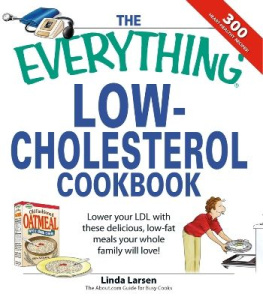

 Copyright 2020 by Rockridge Press, Emeryville, California No part of this publication may be reproduced, stored in a retrieval system, or transmitted in any form or by any means, electronic, mechanical, photocopying, recording, scanning, or otherwise, except as permitted under Sections 107 or 108 of the 1976 United States Copyright Act, without the prior written permission of the Publisher. Requests to the Publisher for permission should be addressed to the Permissions Department, Rockridge Press, 6005 Shellmound Street, Suite 175, Emeryville, CA, 94608. Limit of Liability/Disclaimer of Warranty: The Publisher and the author make no representations or warranties with respect to the accuracy or completeness of the contents of this work and specifically disclaim all warranties, including without limitation warranties of fitness for a particular purpose. No warranty may be created or extended by sales or promotional materials. The advice and strategies contained herein may not be suitable for every situation. This work is sold with the understanding that the Publisher is not engaged in rendering medical, legal, or other professional advice or services.
Copyright 2020 by Rockridge Press, Emeryville, California No part of this publication may be reproduced, stored in a retrieval system, or transmitted in any form or by any means, electronic, mechanical, photocopying, recording, scanning, or otherwise, except as permitted under Sections 107 or 108 of the 1976 United States Copyright Act, without the prior written permission of the Publisher. Requests to the Publisher for permission should be addressed to the Permissions Department, Rockridge Press, 6005 Shellmound Street, Suite 175, Emeryville, CA, 94608. Limit of Liability/Disclaimer of Warranty: The Publisher and the author make no representations or warranties with respect to the accuracy or completeness of the contents of this work and specifically disclaim all warranties, including without limitation warranties of fitness for a particular purpose. No warranty may be created or extended by sales or promotional materials. The advice and strategies contained herein may not be suitable for every situation. This work is sold with the understanding that the Publisher is not engaged in rendering medical, legal, or other professional advice or services.
 CONTENTS
CONTENTS  IF YOUVE PURCHASED THIS BOOK, Im guessing that its probably because you or someone you care about has been diagnosed with elevated LDL, or bad cholesterol, a condition known as hypercholesterolemia. Its also pretty likely that youre worried about what this could mean for your health. But dont fret, thats where this book can help. The first thing I want you to know is that you are not alone. High cholesterol happens, and it actually happens quite often.
IF YOUVE PURCHASED THIS BOOK, Im guessing that its probably because you or someone you care about has been diagnosed with elevated LDL, or bad cholesterol, a condition known as hypercholesterolemia. Its also pretty likely that youre worried about what this could mean for your health. But dont fret, thats where this book can help. The first thing I want you to know is that you are not alone. High cholesterol happens, and it actually happens quite often. YOU MAY BE STARTING THIS CHAPTER WIDE-EYED and worried, but my promise is that you will finish it with a full understanding of the dietary and lifestyle changes required to lower your cholesterol. You can also expect a full run-through of all things cholesterol, including what it is, how having high levels of the wrong type of cholesterol puts your health at risk, and the simple steps you can take to move toward better health. The Basics of Cholesterol Cholesterol is a naturally occurring fatty molecule that is produced organically by the human body. It plays a fundamental role in the structure of human cells and is a building block for many important biochemical compounds, including hormones. It is also required for vitamin D production and the synthesis of bile acid, which is an important digestive aid in your gastrointestinal tract.
YOU MAY BE STARTING THIS CHAPTER WIDE-EYED and worried, but my promise is that you will finish it with a full understanding of the dietary and lifestyle changes required to lower your cholesterol. You can also expect a full run-through of all things cholesterol, including what it is, how having high levels of the wrong type of cholesterol puts your health at risk, and the simple steps you can take to move toward better health. The Basics of Cholesterol Cholesterol is a naturally occurring fatty molecule that is produced organically by the human body. It plays a fundamental role in the structure of human cells and is a building block for many important biochemical compounds, including hormones. It is also required for vitamin D production and the synthesis of bile acid, which is an important digestive aid in your gastrointestinal tract.